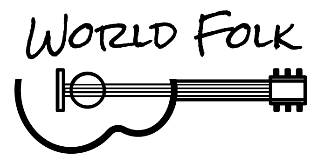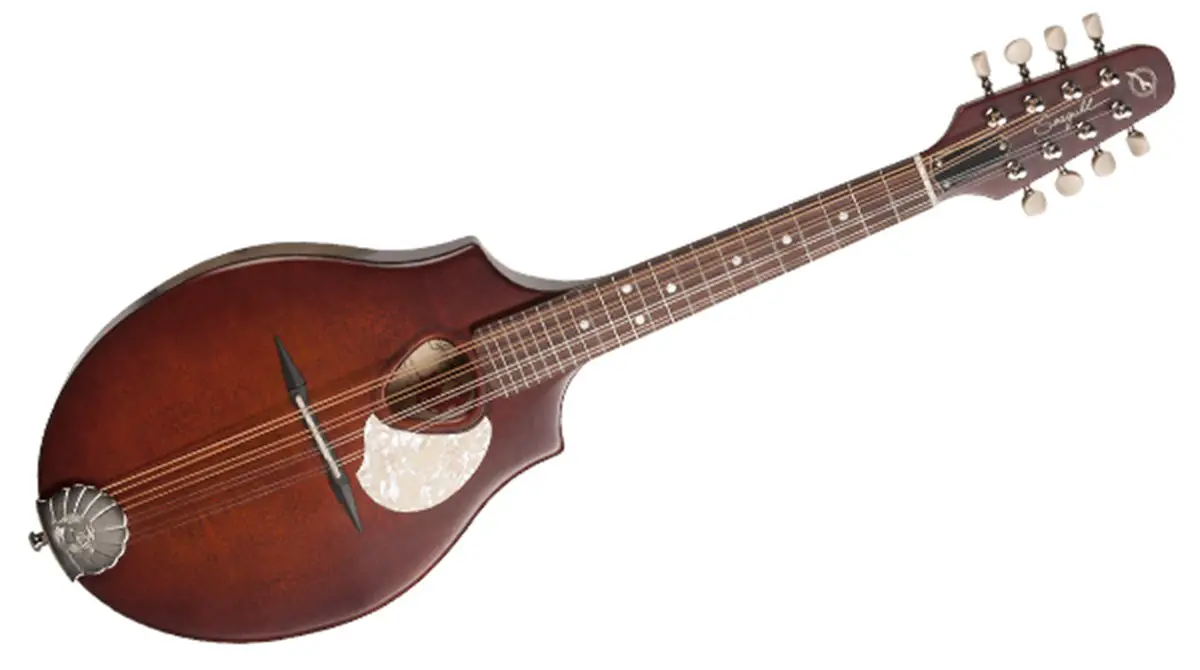Seagull S8 Mandolin Review
Seagull has long been known for unconventional designs, and their S8 mandolin is no different. With a fresh look that nods to tradition without being bound by it, it’s certainly a mando that will get a lot of attention. But does it sound as good as it looks? Read our review of the Seagull S8 mandolin to find out!
Design
Seagull describes its S8 mandolin shape as a “double cutaway.” It looks a bit like an A-style mandolin, only thinner and with two little wings at the top. It’s still as long as a standard mando, but you save a bit of room on either side. If you’re looking for a travel companion, this may be just the space savings you need.
Another plus for travel is that Seagul has designed this as a very durable mandolin. The neck actually extends all the way through the body, down through to the tailblock, forming one solid piece of wood. The solid spruce soundboard is also slightly curved, which helps both its tone and its strength. Finally, there’s a double truss rod imbedded in the neck, helping keep it from bowing. I wouldn’t necessarily test it out too hard, but this is not a fragile mandolin.
Looks-wise, I like it a lot. That’s really all I can say; everyone has their own tastes. It is certainly not a “traditional” look, and the body design and triangle-shaped soundhole might draw some raised eyebrows. But it’s not a huge departure from the norm, and the fit and finish make it a very slick-looking mandolin.
The Seagull S8 comes in three finishes. One is a natural look, light brown on the front, back, and sides. Another is called “Burnt Umber,” a dark, redder brown with a slight sunburst fading on the front and back. Finally, the electric version of the S8 is a traditional sunburst look, lighter in the middle and dark around the edges.
Playability
That non-traditional shape does make it feel slightly different in the hands. The slimmer design gives you a little less room on the soundboard overall. Most mandolin instructors would tell you not to rest your hand or arm on the soundboard, but that doesn’t stop some players from doing it. If you’re used to bracing your hand or arm this way, you might find the mandolin easier to hold with a strap. Many mandolin players already use a strap anyway, so this may not be an issue.
While much of the Seagull mandolin is slimmer and smaller than normal, the fretboard is actually a little wider. This will definitely benefit anyone who finds the usual mandolin fretboard to be a bit too tight. Guitar players and those with thick fingers may find this especially comfortable.
The “double cutaway” design does make playing high up the neck a little easier. Frets 12 to 15 are much more available than on a standard A-style, and better or equal to most F-styles. This combined with that wider-than-usual fretboard make the Seagull S8 a great mandolin for soloing.
Action out of the box was good, and it’s easy to adjust with the truss rod. Like looks, everyone has slightly different preferences when it comes to action, so easy adjustment is key. Adjusting action with the truss rod is especially important because the S8’s bridge isn’t adjustable (or movable), unlike many mandolins. If you really need to, you can file both the bridge and the nut to bring the action down, but this is probably completely unnecessary.
The old joke about mandolin players spending half their time tuning and the other half playing out of tune doesn’t quite work with the Seagull S8. The open-geared tuners and easy to adjust and hold their tune well. The compensated saddle is also a nice touch touch that helps intonation. The frets are well-dressed and placed, and intonation in general is spot-on.
Tone
One thing you’ll notice upon picking or strumming the Seagull S8 is that it’s loud. The curved soundboard certainly packs plenty of punch, and makes this a great mandolin for jams or Irish sessions. It’s fairly surprisingly loud, actually, given its slimmer body. Part of that can be attributed its tone, which is high-end heavy.
The slimmer body does give up a bit on the low end. Chords are not as bass-rich as I would like, although they’re still fairly well-balanced. Overall, the tone is bright and a bit brash. For soloing, this means a punchy sound that projects well. Chopping also sounds great. This is not the best mandolin for soft or somber songs, though, nor for subdued strumming.
Because of the lack of low end, the tone is a not particularly rich or complex. Those looking for an instrument to primarily play alone might find it a bit thin. However, as I mentioned, it projects well in groups. In general, I’d recommend this especially to any bluegrass or Irish/Scottish/”Celtic” mandolin players. The volume and bright tone make it perfect for the melodic playing of a reel or solo. Classical or other players that frequently play solo will find this a great travel instrument, but probably not a primary mandolin.
The Seagull S8 EQ Electric Mandolin
There is a version of the S8 mandolin with a pickup fitted, the “S8 EQ.” It features an on-board active pickup/preamp system, which means it doesn’t require an external preamp or DI box to plug into a PA system. It’s a piezo pickup, meaning that it produces a fairly natural-sounding tone.
Seagull has put electric guitar-style control knobs on a lot of its electro-acoustic instrument, including the s8 EQ mandolin. These are definitely a non-traditional element, and some people may not like the look of it. Fortunately, the looks are just about all it affects. Despite sticking out a bit from the soundboard, they aren’t too intrusive, and won’t affect most playing styles. They also don’t seem to have too much of an effect on the acoustic tone. Ultimately, it’s up to you as to whether you’re a fan of the looks or not. I actually like the look, but I’m very much not a purist!
The two knobs are for volume and tone. Volume is self-explanatory, and the pickup/preamp system produces a very strong and loud signal turned up all the way. The tone gives some limited EQ capabilities. It adjusts from a rounder, boomier, bassy sound to a nice bright jangle. It’d be nice to have a bit more control over the tone, but that would require more knobs, and might clutter up the front. This is enough control for a pinch, and you can always fine-tune the tone with an EQ pedal.
The tone overall is natural enough to pass when plugged in. It won’t blow you away, and definitely sounds “pickup-y,” but not too artificial. As I said, a bit more fine-tuning with EQ probably wouldn’t hurt, but it’s fine enough for most applications. If you’re really concerned about a truly natural tone, no pickup will do the job. In that case, just use a mic.
Conclusion
Seagull has made a name for itself by offering unique designs at very friendly prices. The Seagull S8 mandolin definitely delivers on that front. It’s a well-built mandolin with a blend of both tradition and ingenuity. It’s well-suited as a travel or knock-around mando, with a good enough tone and plenty of volume to hold its own in a bluegrass band or Irish session.
While it doesn’t have the most complex tone out there, it performs as well or better than similarly priced mandolins. Plus, if you’re looking for an electric mandolin, the S8 EQ is a great option. Whether electric or acoustic, Seagull has done a nice job with the S8 line. Happy picking!










